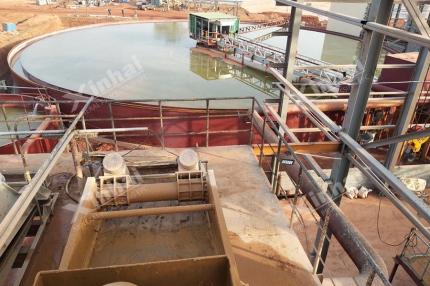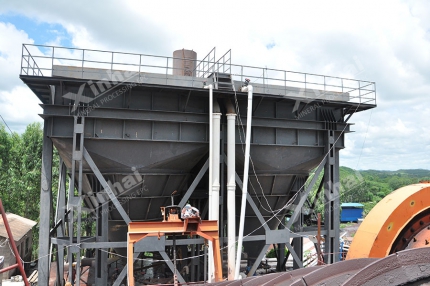The main sources of tailings water are mainly mining and ore processing processes. It may contain solid particles, metal ions, chemical tailings water and other substances. Tailings water may have serious negative impacts on the surrounding environment, such as contamination of surrounding soil and water bodies by chemicals contained in it. Therefore, the treatment and management of tailings water are important issues for environmental protection and sustainable development. The concentrator needs to take measures to reduce the impact of water on the surrounding environment. The following will introduce to you how to treat tailings water.
Use the table of contents below to navigate through the guide:
01Tailings water purification technology
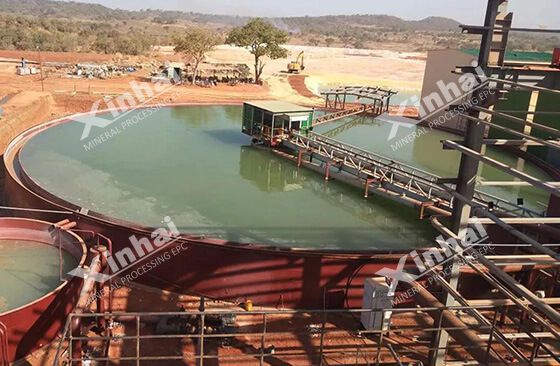
The composition of tailings water is mainly related to the composition, taste and mineral processing method of raw ore. The pH value, suspended matter, sulfide, cyanide, flotation chemicals and heavy metal ions in the water are important detection contents. There are three commonly used tailings purification methods: natural precipitation, physical and chemical purification and chemical purification.
(1) Natural sedimentation technology: mainly used to treat particles and suspended solids in tailings.
(2) Physical and chemical purification technology: mainly refers to adsorption purification technology. When the water contains metal ions such as copper, lead, and nickel, this method can be used to remove it. Dolomite, roasted dolomite, activated carbon lime, etc. can be used as adsorbents for tailings water. These adsorbents need to be crushed to a certain fineness before use, and then mixed and reacted with the tailings water to achieve precipitation and purification of the water.
(3) Chemical purification technology: It mainly refers to the use of bleaching powder, ferrous sulfate and lime as purification agents to treat tailings water containing single or double cyanide compounds.
02Tailings water utilization technology
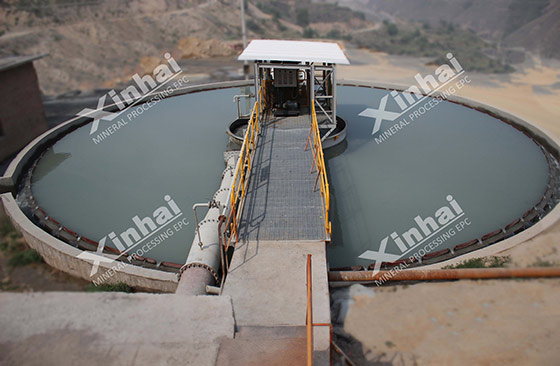
Water from tailings can be recycled to form a closed loop during the mineral processing process to increase the proportion of wastewater circulation. The recycling of tailings is the focus of wastewater treatment technology at home and abroad. At present, the main ways to utilize return water include: thickener return water, tailings pond return water and sedimentation tank return water.
(1) Thickener return water: The concentration of tailings discharged from the mineral processing process is generally low. In order to reduce the consumption of new water, the mineral processing plant will set up tailings thickeners or inclined plate thickeners and other return water equipment for tailings dehydration and sand settling. The clarified water will be concentrated at the bottom of the thickener, and the clarified water will overflow from the thickening tank and return to the concentrator for reuse.
(2) Tailings water return: After entering the tailings pond, part of the tailings will remain in the gaps between the deposited tailings, part of it will penetrate into the outside of the pond through the bottom of the tailings dam, and the other part will evaporate on the pond surface. Tailings pond return water mainly recycles the remaining clarified water.
(3) Sedimentation tank return water: Small mineral processing plants will use sedimentation tanks to utilize return water.
03Dehydration technology of tailings water
.jpg)
Tailings concentration and dehydration technology is an important part of tailings treatment. Tailings dehydration is mainly carried out by using different combinations of hydrocyclones and thickeners.
(1) Hydrocyclone + thickener series process
The tailings from the concentrator pass through a section of cyclone to obtain high-concentration underflow and are discharged. The cyclone overflow is fed into the conventional thickener for clarification and concentration of fine-grained tailings, thereby obtaining fine-grained concentrated products and clarified overflow. The fine-grained concentrated product is combined with the high-concentration underflow of the upper cyclone for discharge, and the clarified overflow can be recycled.
(2) Hydrocyclone + thickener closed-circuit concentration process
This process mainly consists of hydrocyclone, desludge bucket and thickener. After the tailings from the concentrator enter the hydrocyclone for classification, sand settling and overflow products can be obtained. The sedimentation sand is fed into the desludging hopper for desliming, and the cyclone overflow and the desludging hopper overflow are sent to the thickener for processing. Flocculant needs to be added to the thickener to obtain clarified overflow and thinner sand settling. The grit from the thickener is returned to the cyclone and passed through the cyclone to further increase the concentration. The concentrated products are high-concentration sand discharged from the mud separator and clarified overflow discharged from the thickener.
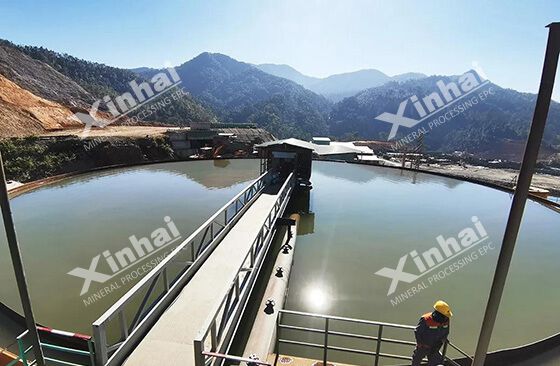
The above contents are several methods of tailings water treatment. Tailings are potential mineral resources with huge reserves. Proper use of tailings resources can improve resource utilization and at the same time improve the economic benefits of the dressing plant. When choosing tailings treatment technology, you should choose a safe, efficient and environmentally friendly method to provide technical support for better recycling and utilization of tailings resources.


 marketing@ytxinhai.com
marketing@ytxinhai.com  0086 13810327080
0086 13810327080 

































































































 CHAT
CHAT MESSAGE
MESSAGE

.jpg)

